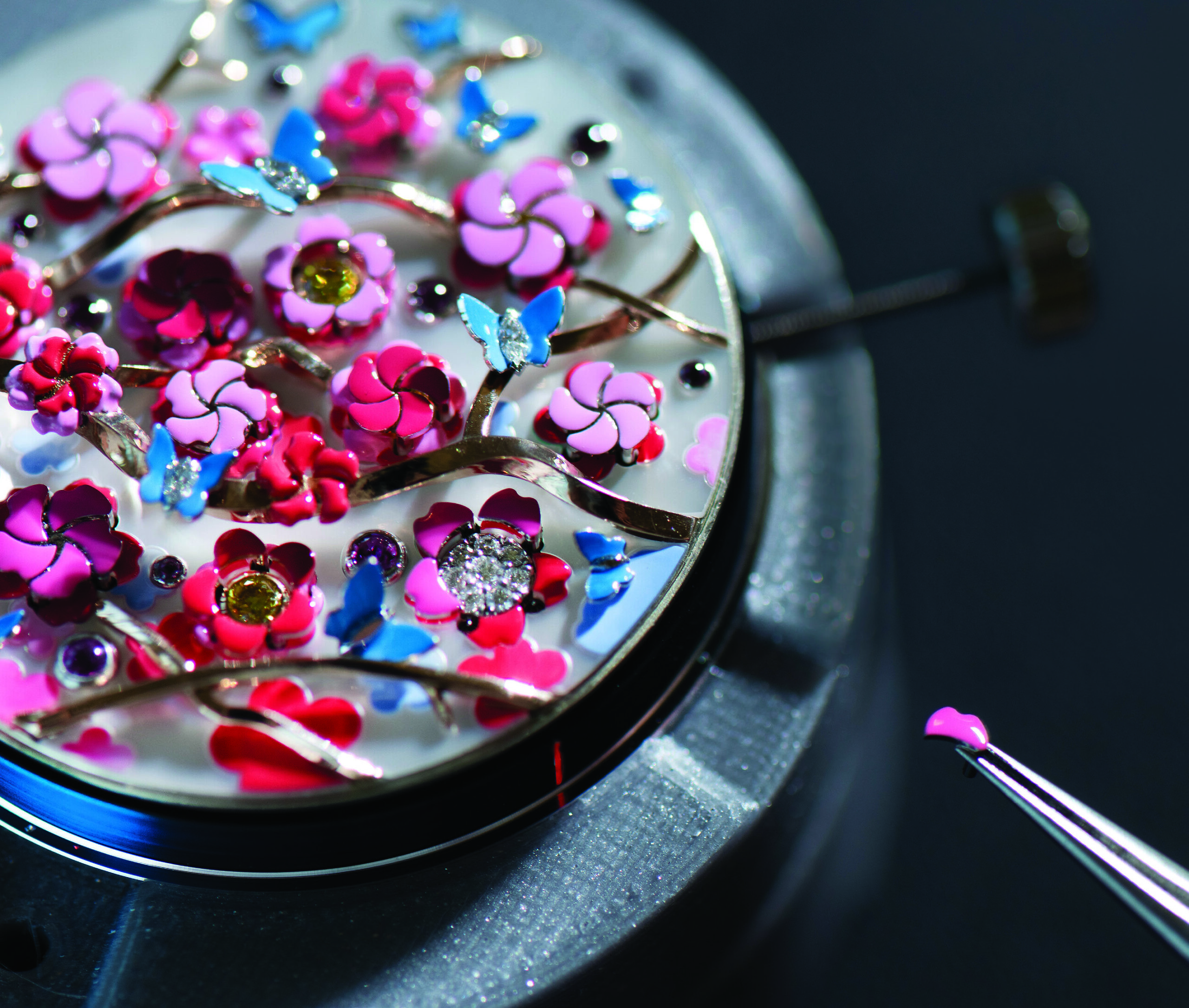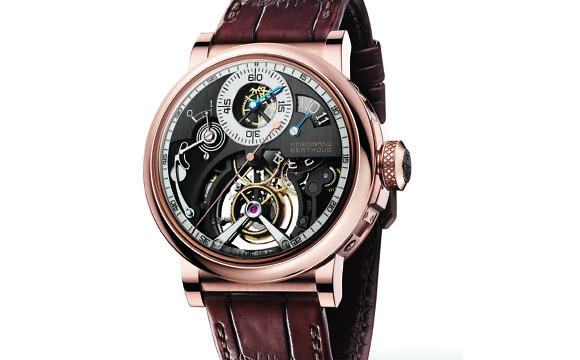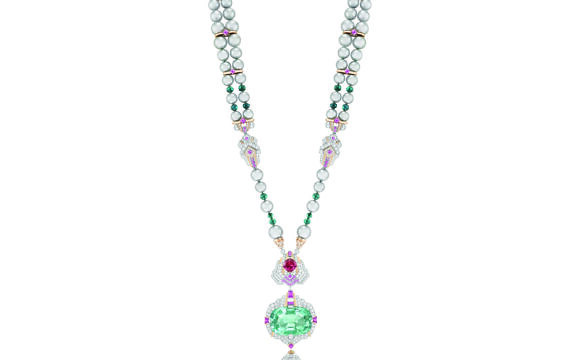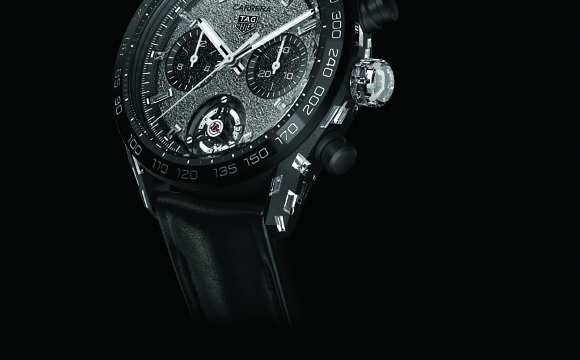Van Cleef & Arpels ผสมผสานความเชี่ยวชาญด้านเทคนิคระดับสูงเข้ากับนาฬิกาอย่างมีวิจิตรศิลป์ และยังมีชื่อเสียงในด้านการสร้างโรงละคร คู่รักมาที่พบกันเพื่อจูบกันบนสะพาน บัลเลต์ และดาวเคราะห์ที่โคจรอยู่ กลายมาเป็นสัญลักษณ์ทางกาลเวลาของที่พักอาศัยในฝรั่งเศส และล่าสุด Lady Arpels Heures Florales และ Lady Arpels Heures Florales Cerisier ขนาด 38 มม. (prices upon request) นำเสนอนาฬิกาที่มาพร้อมกับหน้าปัดที่หลากหลายที่สุดในปัจจุบัน
นาฬิกาแสดงเวลาผ่านการบานและหุบของดอกไม้ แทนที่จะทำงานตามเส้นรอบวงของหน้าปัด เหล่าดอกไม้จะบานสะพรั่งในรูปแบบที่ดูเหมือนจะเป็นการด้วยรอบของการเดินเวลาที่แตกต่างกันสามรอบ การนับชั่วโมงจะนับตามจำนวนดอกไม้ที่คลี่ออกในแต่ละชั่วโมง ในขณะที่การอ่านนาทีบนหน้าปัดจะหมุนในแนวนอน โดยดูผ่านช่องด้านข้างของตัวเรือน
นี่อาจจะดูเหมือนเป็นการแสดงเวลาที่เรียบง่าย แต่การเคลื่อนไหวและกลไกภายในที่ซับซ้อนนั้นเกี่ยวใช้เวลาในการวิจัยและพัฒนาเป็นเวลานานถึงห้าปี และระบบการแสดงเวลาแบบนี้อยู่ระหว่างการจดสิทธิบัตร การกำหนดให้ดอกไม้เคลื่อนที่ผ่านวงล้ออาศัยที่ชาร์จสปริงภายในเพื่อสร้างเพื่อสร้างแอนิเมชั่น ตัวเรือนใช้การควบคุมจากแรงเหวี่ยงที่คอนโทรลความเร็วของการเคลื่อนไหวของกลไก โดยจะปิดและเปิดอย่างรวดเร็ว โดยมีรอบโคจรอยู่ที่สี่วินาที
ดอกไม้ที่รายล้อมไปด้วยลายผีเสื้อวาดด้วยมือ กิ่งก้านสีทอง เพชร และอัญมณีที่ประดับอยู่ในเปลือกหอยมุก การประดับด้วยดอกไม้ของนาฬิกาเรือนนี้ได้รับแรงบันดาลใจจากหนังสือ Philosophia Botanica ในปี 1751 ของ Carl Von Linné ในหนังสือนั้น นักพฤกษศาสตร์ชาวสวีเดนจินตนาการถึงสวนสมมุติที่มีดอกไม้ที่บานและหุบเพื่อบอกเวลา กว่าสองศตวรรษครึ่งต่อมา Van Cleef & Arpels ตระหนักถึงความฝันของเขาในวัยเด็กและได้พัฒนาแนวคิดและสร้างนาฬิกาเรือนนี้ขึ้นมา
จากบทความโดย PAIGE REDDINGER
Blending high-level technical expertise with a poetic rendering of timekeeping, Van Cleef & Arpels is known for creating theaters for the wrist. Lovers meeting for a kiss on a bridge, dancing ballerinas and orbiting planets have been utilized to mark time at the French maison. But its latest, the 38 mm Lady Arpels Heures Florales and Lady Arpels Heures Florales Cerisier (prices upon request), stage a horological first with its most complicated dials to date.
The watches show the passing of time via the opening and closing of flowers. Instead of operating around the circumference of the dial, they bloom in a seemingly random pattern in a series of three different cycles. The hours are counted by the number of flowers that unfurl at each hour, while the minutes are read on a horizontal rotating disc, viewed via an opening on the side of the case.
It may look like a simple performance, but the complex movement involved about five years of research and development. A system, which is currently pending a patent, sets the flowers in motion via a wheel that charges a spring in the barrel that feeds the power to trigger the animation. The barrel uses a centrifugal regulator that controls the speed of the flowers’ movement. They are slow to close and quick to pop open—a cycle that takes up to four seconds.
Surrounded by hand-painted butterflies, golden branches, diamonds and gems set in mother-of-pearl, the flowers take inspiration from Carl Von Linné’s 1751 book, Philosophia Botanica. In it, the Swedish botanist envisioned a hypothetical garden with blossoms that opened and closed to tell the time. More than two and a half centuries later, Van Cleef & Arpels realized his dream in miniature, creating the concept for the wrist.
From the article by PAIGE REDDINGER








